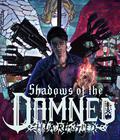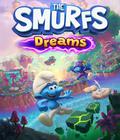"I don't think he'll be trying to figure out a formula, or a grand design that evolves. It'll all be instinct. His gut will be telling him 'I'm going to try this.'" That's how former game journalist Gary Penn describes Jeff Minter in one of the clips featured on Llamasoft: The Jeff Minter Story. After spending time exploring Digital Eclipse's latest release, I have to say that Penn is absolutely spot-on.
Like many North American gamers, I wasn't aware of Minter's work until well into his career. Growing up, I first learned about Minter when I played a copy of Tempest 2000. I later fell in love with Neon, the visual light machine and light synthesizer built into every Xbox 360. As I saw Minter's modern work released, I quickly realized that he had a unique sense of style, but I never quite understood his obsession with llamas — until now. Llamasoft: The Jeff Minter Story is a brilliant look back at Minter's early days, and it covers the evolution of the games as well as Minter himself.
Building on the format that it first used in Atari 50: The Anniversary Celebration, Digital Eclipse has structured Llamasoft: The Jeff Minter Story as a virtual museum. Minter's life and games are broken up into four major chapters: 1) The Early Years, 2) The Hairy Years, 3) The Light Fantastic, and 4) The Tempest. You can explore the collection in chronological order, or you can browse each section freely. While chronological offers the best context, there is something to be said for just bouncing around and exploring.
Although the included games are ostensibly the advertised draw, it's the artifacts that surround the games that can quickly grab (and hold) your attention. There are old press photos, magazine article scans, newsletters, game art, manuals, sketches, and more. Before I knew it, I was eagerly reading a Llamasoft newsletter talking about Minter's trip to Peru. In another file, there was a rant about businessmen ruining the gaming industry. (Alas, it seems some things never change.)
While these "little things" may not seem like a big deal, they are the very elements that add color and context to the experience. A printed newsletter isn't something that gaming fans are likely to experience from a software publisher today. Developers at Nintendo aren't writing about their recent vacation plans or their excitement over new hardware. Instead, you'll see a blurb on a stream or an interview on a website. The medium has changed, and how fans consume content has changed with it.
One of my favorite bits in Llamasoft: The Jeff Minter Story actually ended up being the Minter-Views blurb boxes. Scattered throughout, each has a quote or comment from Minter. They can range from serious to irreverent, but when taken together, they give a snapshot of Minter's personality. I've never met Jeff Minter, but after having gone through Llamasoft: The Jeff Minter Story, I almost feel like I know him.
The included games run the gamut from unreleased demos to retail releases. The majority of them are older titles, running on emulated versions of the Sinclair ZX81 and Spectrum, the Commodore VIC-20 and C64, and the Atari 8-Bit and ST. The newest title is Tempest 2000 on the Atari Jaguar (it's also the only Jaguar game in the collection). If you were hoping to see Minter's modern titles, you'll have to pick them up separately.
If this were just a basic ROM collection, it probably wouldn't do well, as some of the games can be excessively difficult (modern gamers really do have it easy), while others just aren't that good. Even the handful of "bad" games can be interesting because of their placement in the timeline and seeing how they influenced Minter's later work. Games aren't just thrown at you or included to tick off a box. All of the inclusions were clearly conscious choices.
What are some of the more interesting inclusions? As a self-professed light synthesizer fan, I was disappointed that a version of Neon wasn't included (that would have been very cool), but I did stumble across Colourspace. An evolved version of Psychedelia, Colourspace ran on the Atari 8-Bit, offering up new features that couldn't be done on the Commodore 64. A tooltip pointed out that Colourspace was actually running in the background the entire time I was in the museum timeline and generating the ambient visuals. OK, now I had to take a look. Digital Eclipse presented the game and visuals as originally released, but they also included a new rendering layer, allowing the emulated Atari game to output some very smooth, modern-looking visuals. Oh, wait, how much time just passed? Exactly.
Another amazing inclusion is the Attack of the Mutant Camels '89 prototype/demo for the Konix Multi-System. The what? The Konix Multi-System was meant to be a competitor in the 16-bit generation, but it never came out. If you knew about the Konix Multi-System, you could download an emulator and play the prototype, but the number of people who know about it and are likely to search it out is relatively low. Here, you can learn about the system, read some of Minter's thoughts, and pop into the demo for a few rounds of hands-on gameplay with no setup required.
Rounding out the collection is Gridrunner Remastered. Here, Digital Eclipse has taken Minter's original Commodore 64 code and layered an updated set of visuals on top. It could easily be a stand-alone release on a modern console, and no one would bat an eye. If you are going to play it, be sure your controller is up to par. Gridrunner requires extreme precision, and if you have an older controller with a floaty joystick or large analog dead zone, you're going to have a very rough time.
The games included in Llamasoft: The Jeff Minter Story may not be for everyone, but the experience most certainly is. Digital Eclipse is quickly establishing the Gold Master Series as the video game equivalent of the Criterion Collection film releases. If you have even a passing interest in video game history, you won't be disappointed.
Score: 9.0/10
Editor's Note: If you want to make things a bit more lively, go into the options menu and change the music mode from "Ambient" to "The Minter Mix."
More articles about Llamasoft: The Jeff Minter Story










 Llamasoft: The Jeff Minter Story is a virtual museum of design documents, playable games, and all-new videos tell the fascinating story of a true independent game designer.
Llamasoft: The Jeff Minter Story is a virtual museum of design documents, playable games, and all-new videos tell the fascinating story of a true independent game designer.












